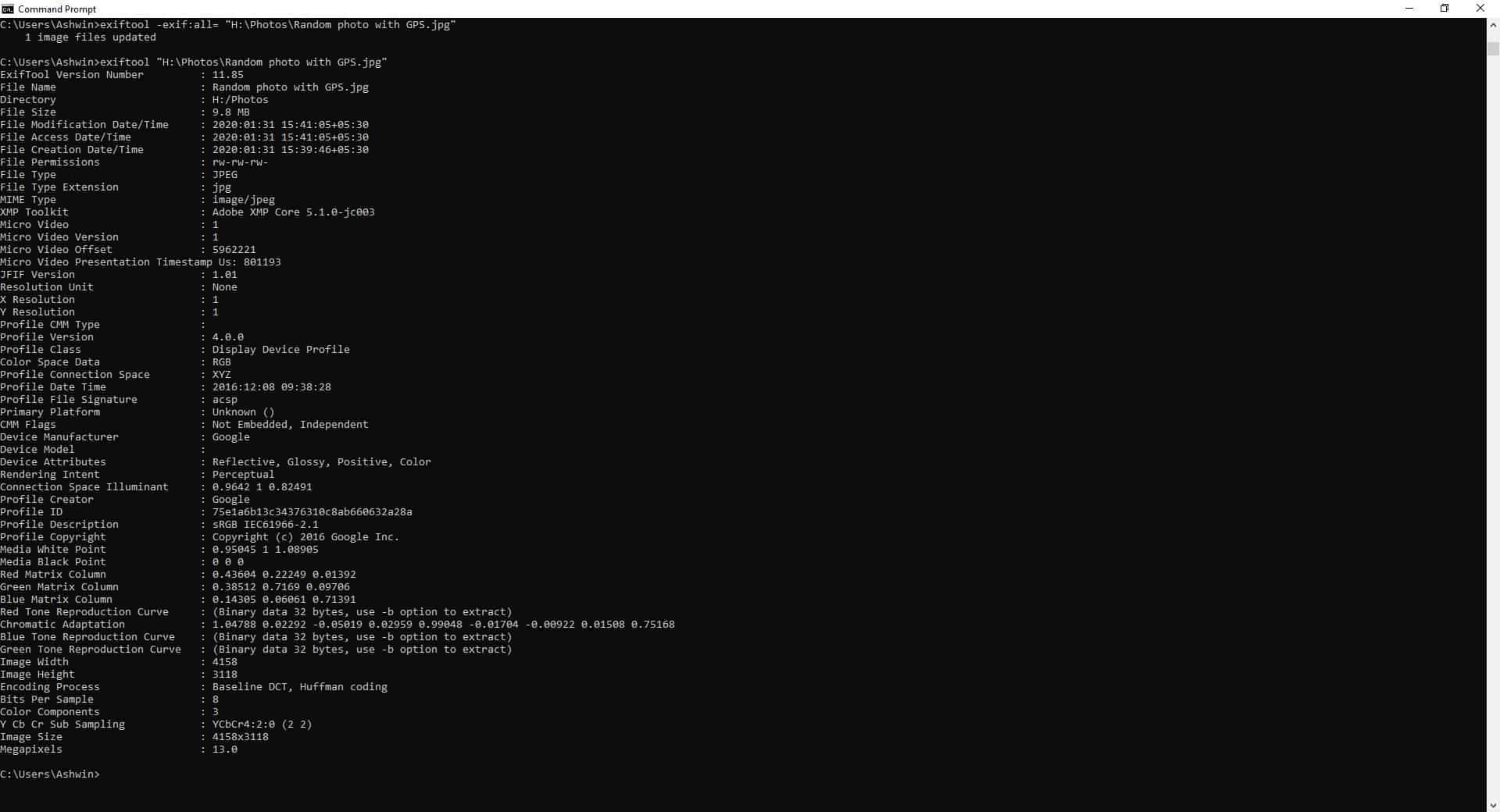
They are the standard file types that are used by digital cameras.įor the record, many photo-sharing websites display image metadata by default, so choose your image host wisely. When I use the term digital image in this article, I specifically refer to the.

As you can see in Figure 2, Exif data is displayed along with each published digital image. Take, for instance, the photo-sharing site. And for some people, notably photographers, Exif data can prove to be a valuable tool. Date and time that the picture was takenĪs you've probably (correctly) guessed, these metadata fields are called Exchangable Image File Format ( Exif, often incorrectly spelled EXIF) data.
Camera make, model, and (sometimes) serial number. The digital photos that you take with your smartphone or point-and-shoot camera contain numerous metadata fields that describe various aspects of the photo's environment, including, but not limited to, the following attributes: Before you accuse me of being too abstract, allow me to explain. In computing nomenclature, the term metadata denotes data that describes other data. Boy, things have changed with taking simple snapshots in the intervening 30 or so years, haven't they? Metadata and Exif I also was selective about who saw my photos because you could hold them in your hand, and they could be shared only with people whom I was physically near or to whom I mailed the prints in an envelope.įinally, the thought of taking risky or provocative pictures was out because I was sure that the images would get flagged by the photo processor at my local pharmacy. The raw truth of the matter is that I didn't take any "selfies" with my old Disc camera among other reasons, the camera's focal length was too long. 
Figure 1 The Kodak Disc camera, circa 1982 (Image credit: )






 0 kommentar(er)
0 kommentar(er)
